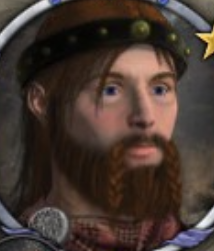As you cross the Welsh Bridge into town you appreciate the beauty that surrounds you, the river, the willow trees, the ideally located restaurants. Sabrina the picturesque passenger boat is setting off on her trip and the ‘Eights’ are returning to their Pengwern Rowing club, a name that harks back to times when here was considered to be Welsh land. Walking up the Mardol with its Tudor buildings, twisted with age, you hear the Welsh accents and occasionally the Welsh language. The town today is the shopping hub for most people in Mid Wales. Many fervent Welsh people reluctantly have to admit that this town is also their birthplace, for there are no major hospitals in the whole county of Powys.

Turn left at the top of the Mardol and you start to climb up the now pedestrianised main shopping street of the town. At the top of the street is a small monument that most people have seen countless times but have dismissed as being irrelevant. This is the junction of Pride hill, Castle Street and St Mary’s Street and referred to as the High Cross. This is Shrewsbury’s execution site dating back as far as the 12th century

On Barclay’s Bank, across the street stands a plaque that explains the significance of this site. A significance that reverberates throughout Welsh history. This was where Dafydd ap Gruffydd, the last independent Prince of Wales was executed and with his execution, Welsh independence was lost.

Dafydd was captured on the 22nd of June 1283. A parliament was summoned to Shrewsbury on the 28th of June to decide his fate. He was condemned to death for ‘high treason against the King’. Edward 1st ensured that his death would be slow and painful. He was incensed that Dafydd had broken the Treaty of Aberconwy and that he had attacked one of his castles on a religious day. In a cruel era, Dafydd’s demise was still gruesome.

On 3rd of October 1283 he became the first prominent person in recorded history to be hanged, drawn and quartered. Dafydd was dragged through the streets of Shrewsbury attached to a horse’s tail, then hanged alive. He was revived, disembowelled and then his entrails burnt before him. His body was cut into four quarters.
Dafydd’s daughter Gwladys and his niece Gwenllian were sent to convents in Sixhills and Sempringham respectively. Dafydd’s sons were imprisoned at Bristol Castle. This was to be the end of the succession
Dafydd was a Prince of Gwynedd along with his brothers Owain and Llywelyn. Llywelyn is remembered fondly as ‘Llywelyn ein llyw olaf’ (Our last leader). Dafydd isn’t remembered so fondly. He would align himself with Henry III and later Edward I against his brother Llywelyn but Llywelyn would always forgive him. Both Dafydd and Owain fought against Llywelyn for more land in 1253 but both were captured with Dafydd being released and forgiven the following year, Owain wasn’t. Llywelyn would go on to gain lands all over Wales with no restraint from Henry III and in 1263 by the Treaty of Montgomery, Henry III recognised Llywelyn as ‘Prince of Wales’. In 1274 Dafydd had planned to assassinate Llywelyn but failed and fled.
When Edward I became King and returned from the Crusade, the situation changed. Edward was intent on taking control of Wales. In 1276 He led a big army into North Wales and confiscated the harvest in Anglesey. Dafydd at this time was based with Royal troops at Chester under the command of the Earl of Warwick. Llywelyn’s forces were starving and had to sue for peace. The two brothers were reconciled again by the Treaty of Aberconwy, negotiated with the new King Edward I which would recognise Dafydd as Llywelyn’s heir but Llywelyn would lose land and power.
On Palm Sunday 1282, Dafydd attacked Hawarden castle and then Rhuddlan, which forced Llywelyn into rebellion against Edward I. Support for the rebellion quickly surged with Aberystwyth castle being attacked and those princes who had allied themselves to the King at the Treaty of Aberconwy now changed sides. Llywelyn took his rebellion southwards but was killed in December 1282 at Cilmeri, near Builth Wells and his head taken to London and placed on a spike.
Dafydd was now a hunted man. He moved from Dolwyddelan castle to Castell y Bere and then Dolbadarn with his family and also Gwenllian, Llywelyn’s young daughter. He finally moved to an area near Abergwyngregyn but was captured and taken to Rhuddlan, Chester and finally Shrewsbury.
Today, on the anniversary of this gruesome execution, people with busy lives rush by unaware of the history that surrounds this monument.
If you’re new to the site and want to see future articles or past articles, click on the big blue Celt Facebook or Celt Twitter buttons and then Like or Follow the page.
Diolch